 |
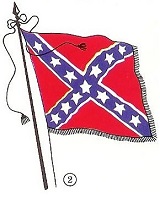 |
 |
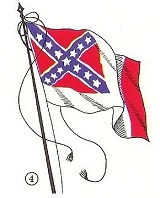 |
|
CONFEDERATE FLAGS THAT NEVER FLEW The secession of South Carolina and six southern comrades from the Union necessitated certain immediate collective actions on their part. The new Confederate States of America constructed a constitution (strikingly similar to the U.S. Constitution—much of the verbiage was word-for-word duplication—adding recognition of the principle of states' rights and legal protection for the practice of slavery); named Montgomery, Alabama, the provisional capital (four months later, the Confederate capital was moved to its "permanent" location at Richmond, Virginia); selected Jefferson Davis of Mississippi and Alexander Stephens of Georgia as the Confederacy's first (and only, as it would be) President and Vice-President, respectively; sought to establish diplomatic relations with some European nations (ultimately hoping for war allies should President Abraham Lincoln attempt to militarily block secession); and attempted to design a flag to fly over the rebellious union of southern states. Confederate government officials took just four days to compose their constitution; creating a satisfactory flag took four years! Below are four banners which represented the C.S.A. during its relatively short existence followed by six additional flags—of decidedly more colorful and imaginative designs—that never flew for the Confederacy. |
 |
 |
 |
 |
|
The "Stars and Bars" [1] was unfurled in early March 1861. Like most of the Confederate flags—adopted and proposed—it did not deviate far from the red, white, and blue stars and stripes of "Old Glory." During the First Battle of Bull Run (July 1861), an approaching detachment of soldiers remained unidentifiable until the last wind-gusted moment because of similarity between flags of the two opposing armies. To provide clarity in future battlefield encounters, the "Battle Flag" [2] was designed by General Pierre G. T. Beauregard. Though it was never officially adopted by the Confederate government, it is today the banner most associated with the South. In 1863, a new flag [3] became official. Its field was white with Beauregard's previous design as its canton. The South called it the "Stainless Banner." This version, as well, had battlefield recognition issues. When hanging motionless, it sometimes looked like the traditional flag of truce. A broad red stripe was added in March of 1865 [4]. Ironically, surrender of General Robert E. Lee's Army of Northern Virginia (effectively ending the war) occurred just weeks later at Appomattox Court House. |
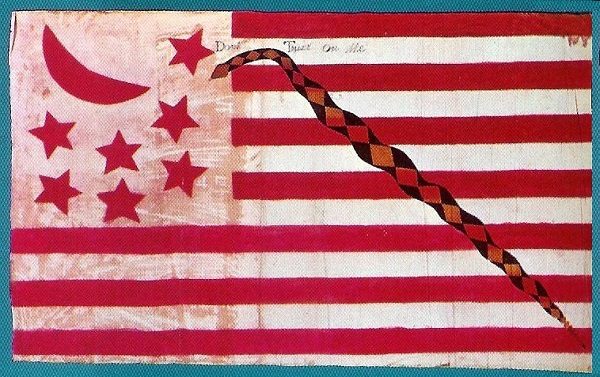 |
| John Sansom (Alabama): "The seven white stripes represent the States in friendly relations with the nations of the earth. The red stripes represent the States, if insulted, to fight—that is, they will take blood.... The red stars represent the moon in war. The red moon represents the red stars in war, all combined together.... The diamond rattlesnake, you may tread all around him; he will not strike; if you tread on him he then will sing his rattle and give you full time to leave; if you don't, he strikes—it is certain death...." |
 |
| Cadet (The Citadel, Charleston, South Carolina): "The large star in the center represents the Confederacy; the rays or stripes radiating from the central star, the six States which now form it never to be increased in number on the admission of new States. Each State is also represented by a small star, and, as our number is gradually increased, for each addition will a new star be placed on our banner whose brightness shall lend increased luster to that central one to whose glorious light thay all conduce...." |
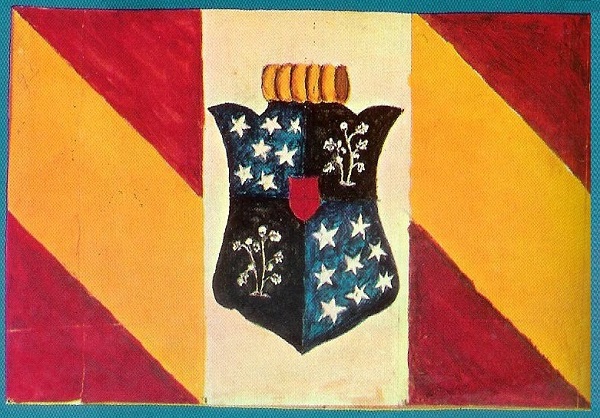 |
| W. Riddle (Eutaw, Alabama): "The [flag] consists of six stripes...to represent the first six States which formed the Confederacy; the Shield or Coat of Arms to contain fifteen, or as many stars as there are States to be added as they join the Confederacy. The Shield is surmounted by a golden cotton bale, and the other corners contain cotton plants...." |
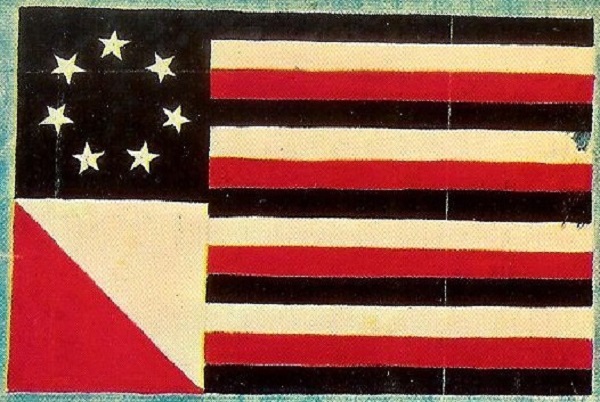 |
| Z. (reported in the Charleston, South Carolina Mercury): "...we have one [flag] not only plain and of striking contrast in color, but approximating to, yet differing essentially from, the Flag of the United States. This Flag we cannot regard as one under which our common country has risen to unexampled prosperity, and under which also some of the most noble achievements of the present age have been accomplished, lifting our national reputation into a truly high and commanding position, and to which proud elevation none certainly have contributed more than our own native brethren of the sunny South...." |
 |
| Lewis May (Coffeeville, Alabama): "The emblems, as seen on the Flag, were taken from the last scene of the aurora borealis of the 18th Septmber, 1859 (at night). The red portion of the field represents that portion of the northern hemisphere that was covered by the red (and the red receding), and may apply to the ambition of the North against Southern rights. The blue portion of the field represents the southern hemisphere (the sky being clear). The white stripes may be numbered to represent the number of States belonging to the Confederation, and also the purity of our intentions, since white has been an emblem of innocence in all ages of the world. The pale circle, in which the white stripes all seem to unite as their base, may be considered an emblem of the combination of the Southern States.... The eye is a design of my own, and, first, represents the President watching over the nation for the good of the people; secondly, that all-seeing eye of God by whose guardian care all nations have their existence...." |
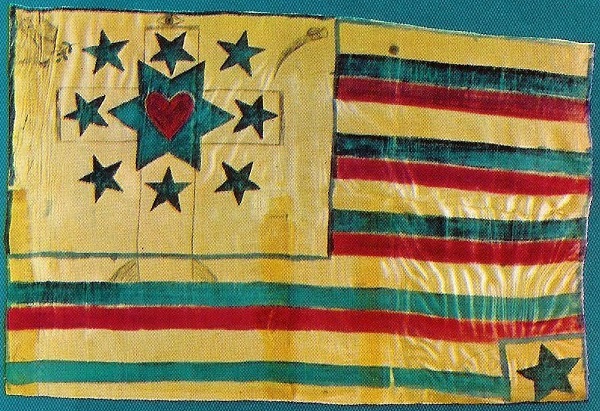 |
| Mrs. E. G. Carpenter (Cassville, Georgia): "The center star of six points represents the six States now in Congress; the eight surrounding stars, eight of the border slave-holding States, while the ninth is placed in the farther corner of the stripes, showing the right of single secession. The heart in the center star means the heart of the people is in the Southern Confederacy; the dove and olive branch, our wish for peaceable secession; but, if necessary, we must resort to the righteous defense of the sword. Under all circumstances, we must remember that the eye of God is upon us, and the cross that we must look to a higher power than the wisdom and arm of man...." |